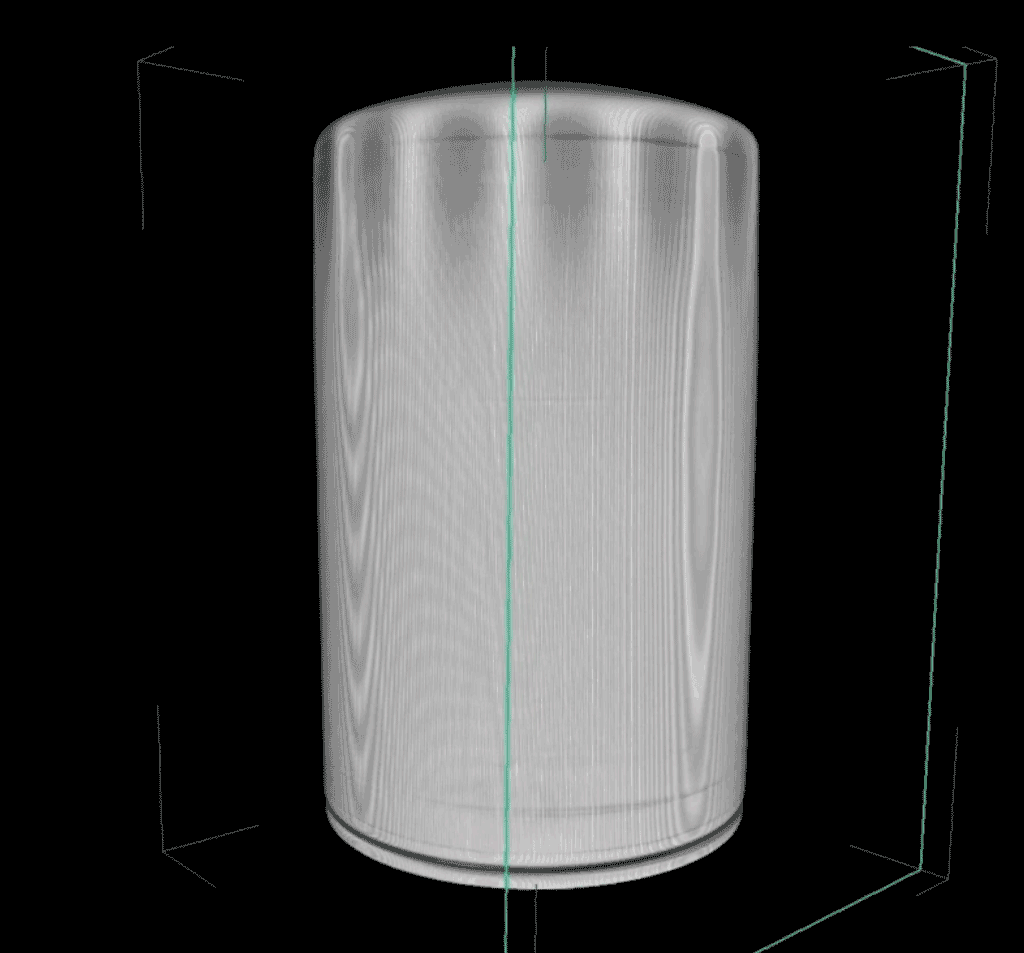Industrial 3D CT Scanning utilizes the same technology as medical diagnostic computed tomography, with a few major differences. In diagnostic computed tomography the patient lies stationary and the X-ray source and detectors rotate and move axially in a helical pattern, whereas in industrial CT the object being scanned rotates and moves axially while the X-ray source and detector remain fixed. In addition, industrial scanners utilize much more powerful X-rays than medical diagnostic machines, allowing the rays to penetrate plastic, wood, composite materials, and even metal.
4D vs. 3D CT Scanning
With its higher power, industrial CT scans are capable of accurately defining internal and external features of parts, assemblies and products, both statically and over time, with possible resolutions down to one micron. Our unique 4D Imaging+ technology utilizes custom remote-controlled fixtures and software to actuate products and components during scans, enabling understanding of gears, mechanisms, fluids, particles and more. This technology is also able to evaluate complex multi-component parts to ensure proper manufacturing and assembly, and is very effective for inspecting welds and press fits in industries such as biomedical, aerospace, and automotive.
Kinetic Vision's industrial imaging group has ISO 9001:2015 certification, which is the world’s highest recognition for meeting manufacturing and service standards of excellence. ISO 9001 is a quality management standard that helps manufacturers and service providers ensure that their products and services continue to meet customer satisfaction standards while striving to continually improve quality. In conjunction with this certification, our in-house quality standards govern machine calibration, technician training, data acquisition methods, data storage and data security.
Uses of Kinetic Vision's industrial CT scanning services include First Article Inspection, 3D Metrology, Failure Analysis, GD&T Analysis, 4D CT Scanning, Nanoscan, Composition and Porosity Analysis, Wall Thickness Analysis and our Reverse Engineering Services.
Learn more about Industrial CT Scanning and Computed Tomography.

Automotive Oil Filter Quality Study
In this example, 3D CT scanning of an automotive oil filter from a major manufacturer was done to examine its production quality. Color-coding is used to differentiate areas of different density or thickness, and section planes allows examination of internal features. This helped production quality assurance teams better understand the variances present in manufacturing systems, resulting in better process control.
Hand-held VR Controller
3D CT scanning was utilized to precisely determine the internal and external dimensions of a virtual reality (VR) controller, including the housing shape and electrical component locations. Color-coding is used to depict differences in material density, helping differentiate plastic and metallic components.

